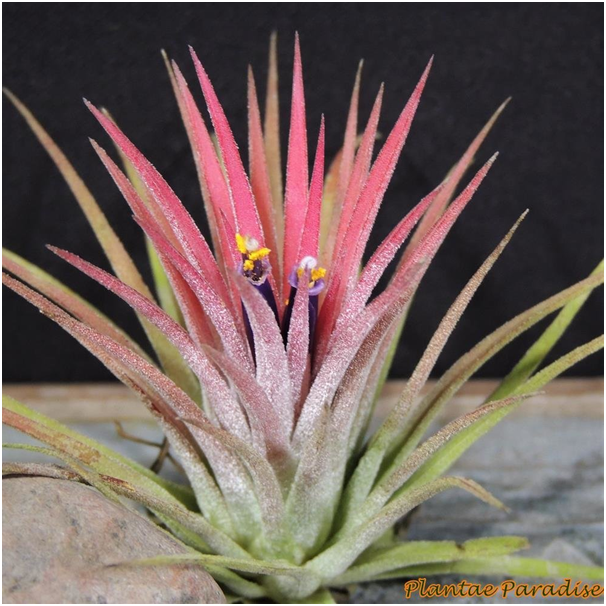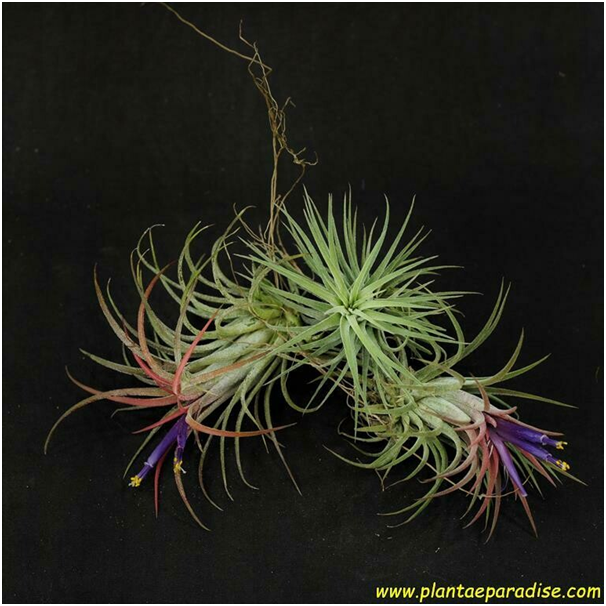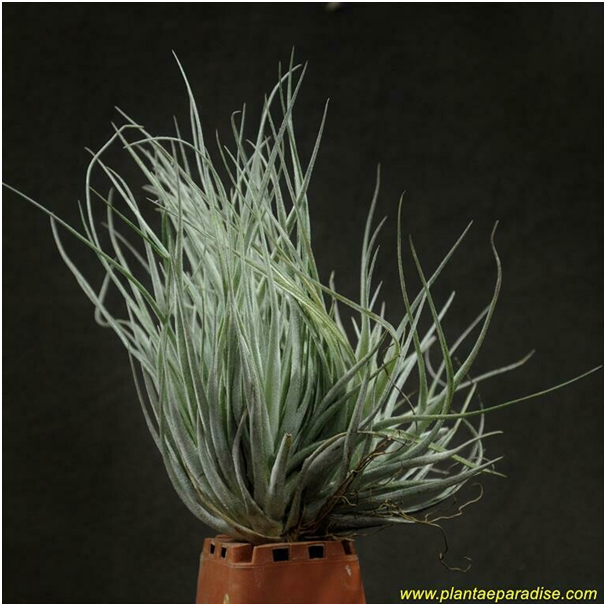Tillandsia is a genus of around 700 species of evergreen, perennial flowering plants in the family Bromeliaceae, native to the forests, mountains and deserts of Central and South America. Although they belong to bromeliaceae, they are not to be treated like regular run of the mill bromeliads found in the nurseries. Although they do have some similarities with the bromeliads, like they have weak root systems and mainly leaves do the water and nutrient absorption. Know more about airplants contact with plantaeparadise.com.
Tillandsia species are epiphytes, i.e. they normally grow without soil while attached to other plants. Generally, the thinner-leafed varieties grow in rainy areas and the thick-leafed varieties in areas more subject to drought. Moisture and nutrients are gathered from the air (dust, decaying leaves and insect matter) through structures on the leaves called trichomes.
Like some color changing bromeliads, some of these too show change of color. This change of color to red is called blushing. Some may exhibit a spectacular inflorescence while some may have flowers that are generally small. Below you”ll find some important tips for maintain your airplants. Get the best airplants at plantaeparadise.com.
Care for tillandsias. Tillandsias grow differently than most other house plants, so they can be confusing to the beginner. They are really very hardy, and require much less attention than other house plants.
- They don’t like extreme lows in temperatures. So protect airplants from them from extreme cold in North India in winters. There are so many species and so much variation between them that no specific temperature limit can be laid down. Try and keep night temperature above 8 to 10 deg C.
- They like a day and night temperature swing of about 10 to 15 Deg Centigrade.
- Give airplants bright, filtered light.
- Provided the atmosphere is not too dry (as in an air-conditioned home) they can survive with water misting and the occasional bath.
- If you are growing airplants indoors and the air is dry, you will need (at minimum) to submerge the plant in water for 2-3 hours about every two weeks.
- Otherwise, in a shade-house or unheated home, you can use a soaking mist once or twice a week in summer, once a month in cooler weather.
- Fertilize your airplants by adding 1 gm per litre of soluble n- p- k and 1 gm per litre of micronutrients.
- They are prone to rot if they get too much wet or water stays in the leaves of airplants.
Mounts and globes
- They (airplants) look pretty with wooden pieces and in glass globes etc.
- Care must be taken that while affixing to wood the roots are not damaged when being inserted in crevices of wood and that no water stays inside for long.
- When airplants keeping in glass terrariums avoid strong sunlight as it can cause globe to heat up and even cause sunburn on plant.
These plants have CAM metabolism. It is much better to water in the morning than at night. Airplants absorb the Carbon Dioxide from the air at night instead of the day time. If the airplants is wet, it does not breathe. therefore, unless it can dry quickly at night, plan on morning baths.
Best way is to dry airplants upside down under a fan, after watering or dunking. As the weather cools you can decrease the frequency of dunking. Same way it can be reduced in monsoons.
Actually for home growing you have to build up your expertise with some ‘ Grow n watch ‘ practice
For those interested in adding these unique plants to their collection, a wide range of airplants for sale are available on our website, www.plantaeparadise.com. Whether you’re looking to buy airplants, find cheap airplants, explore more airplants for sale, or discover the best airplants, there’s a Tillandsia for every environment and aesthetic preference on our site.



